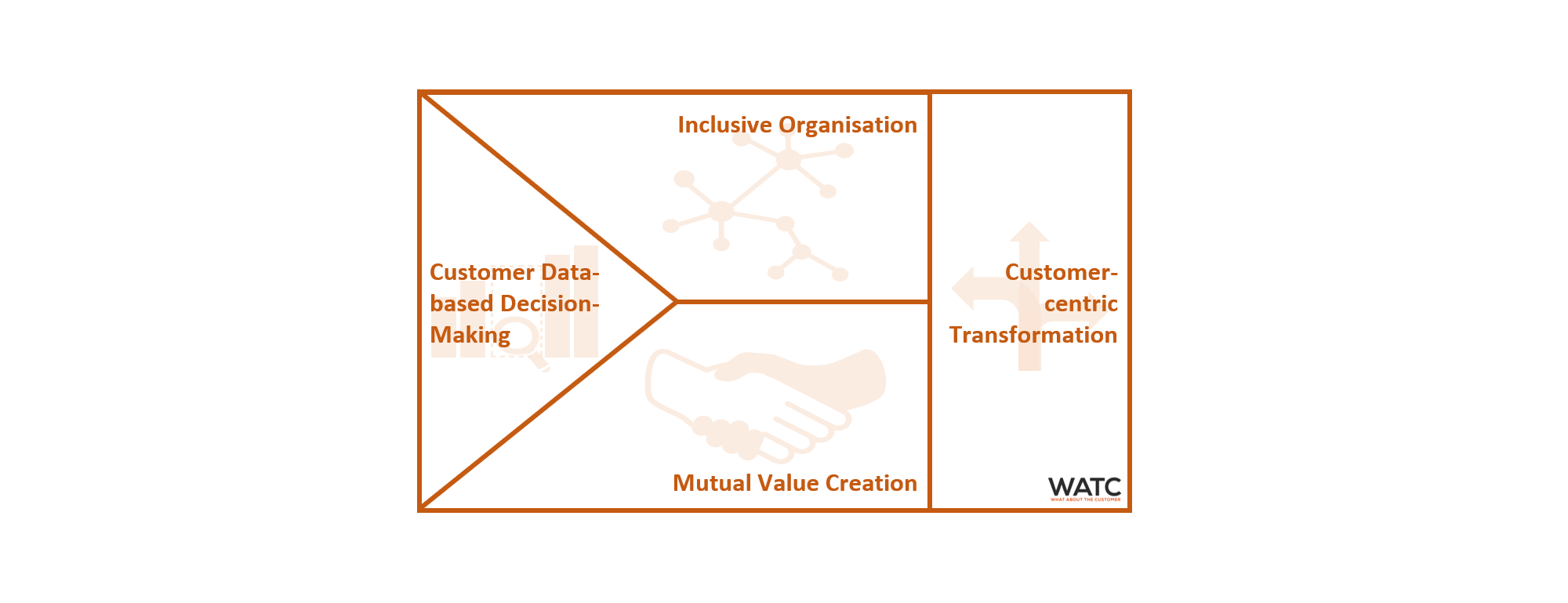Is your company living and breathing customer centricity? We are often asked what it takes to be truly customer-centric. Many definitions of customer centricity one can find on the internet (such as this one) don’t really help the practitioner. Our experience from multiple client engagements and our research tell us that there are four key prerequisites for customer centricity in commercial and non-commercial organisations. They have to do with the way the organisation makes decisions, how the organisation is set up, how it creates and measures value and how it evolves over time.
(Eine Deutsche Version dieses Artikels finden Sie hier.)
In short, the four criteria are:
- Customer Data-based Decision-Making
- Inclusive Organisation
- Mutual Value Creation
- Customer-centric Transformation
The Customer Centricity Canvas shown in this article summarises the four success criteria. It has been developed over the past few years and is used in our advisory work in a multitude of ways. It serves our clients as a self-assessment tool, as a development and design checklist and as a controlling mechanism.
The four characteristics of customer-centric companies
The first characteristic of truly customer-centric organisations, i.e. companies that are living and breathing customer centricity, is that they make all relevant decisions based on solid customer data. This requires them to understand which kind of information on customers is vital, to have proven routines to gather this information, to master superior analytical skills and consistently to use the gained insights in their decision-making processes.
The second prerequisite for customer centricity is an inclusive organisation. It includes the way an organisation co-operates internally, how it integrates business partners and to which degree it involves its customers into the development and delivery of its offering. The organisational setup, processes, tools and mindset/culture are important determining factors of an inclusive organisation.
Mutual value creation as the third element of customer centricity describes how well an organisation manages to balance the value it creates for itself and the value (or benefits) it provides its customers. Mutual value creation is determined – among other factors – by the choice of business model, by the chosen customer relationship strategy and by the consistency of the provided customer experience.
The final and fourth characteristic of customer-centric companies is customer-centric transformation. It describes the ability of an organisation not only to develop itself towards customer centricity as an initial effort, but to stay customer-centric by constant improvements and continuous learning. Customer-centric transformation requires a clear road map for transforming/developing the organisation itself and a playbook for transforming/developing the relationships with its customers.
More resources
For a more detailed version of the Customer Centricity Canvas that can be used as a powerful self-assessment tool for your organisation, do not hesitate contacting us. If you are interested in more publications about customer centricity, visit our publications page. For concrete client impact stories follow this link.




